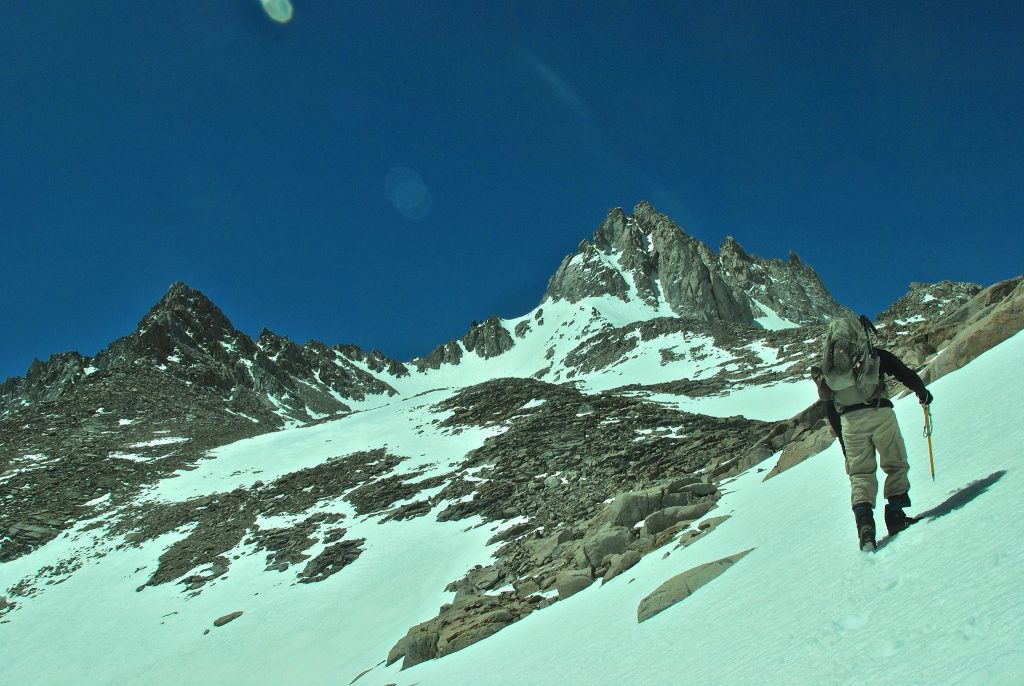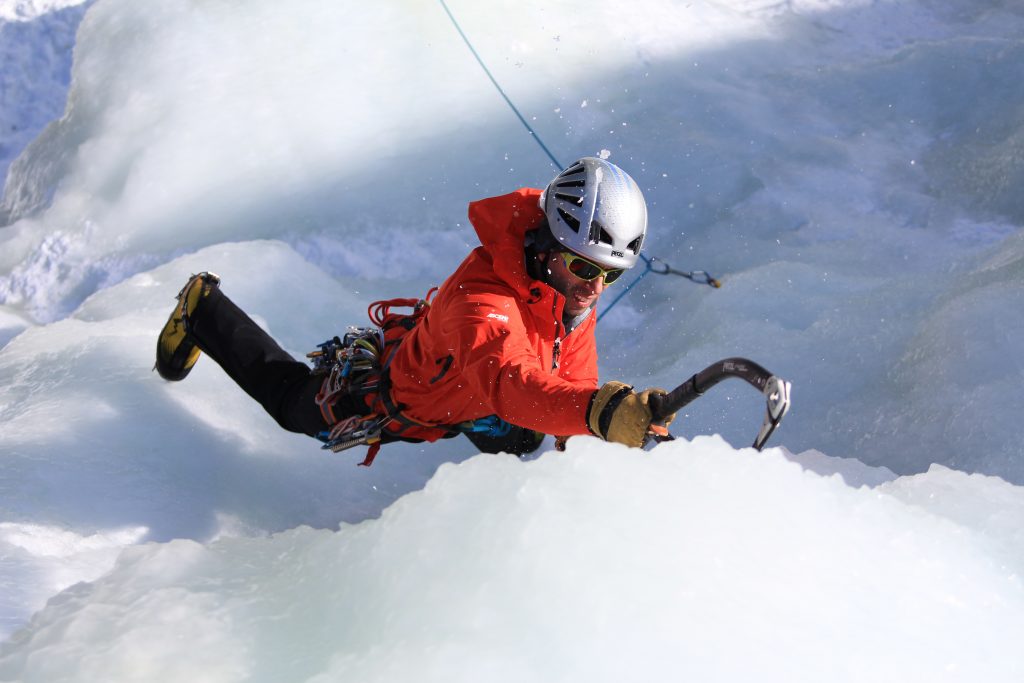“I hate winter,” “I hate snow,” and “I hate ice” are commonly heard phrases throughout the Northeast during the winter months, but not from our guides at the Eastern Mountain Sports Climbing School. In fact, for many of them, this is prime climbing season, and whether they’re scaling the popular Lion Head route on Mount Washington or the famed steep ice of Frankenstein Cliff, they’re sure to be carrying an ice axe.
However, with so many different types on the market, knowing which one to pick can be difficult. To help make your decision easier, I spoke with EMS Climbing School manager Keith Moon to gain some insight into how to find the right ice axe, depending on what you hope to accomplish in the mountains.
Guide: KEITH MOON
School: NORTH CONWAY
Specialty: ROCK CLIMBING, ICE CLIMBING, AND SKIING
Keith offered some simple advice for trying to make sense of the ice axes on the wall of your local EMS: “The lower the angle you’re climbing, the longer and straighter you’ll want your ice axe. The steeper the terrain, the shorter and more radically shaped you’ll want your tool.” As a reminder, he explained, “The challenge is to match the right tool and technique to the right terrain.”

Mountaineering Axes
Mountaineering axes are distinguished by their straight shaft, adze (the flat, wide end of the head used for chopping steps in hard snow and ice), and classically curved pick, and they are staples of our school’s winter Mount Washington climbs. For these journeys, the EMS Climbing School uses Petzl products and has seen the Petzl Glacier axe dutifully accompany many to Mount Washington’s summit over the last couple of years. Although the Climbing School loves this model, our EMS stores carry a wide assortment of general mountaineering axes, including the incredibly popular Black Diamond Raven.
An essential item in any mountaineer’s kit, this axe used in combination with crampons is how climbers protect themselves when attempting low-angle terrain. The axe, when plunged into hard snow and ice, can be used for increased stability, while the pick allows climbers to self-arrest, or stop themselves, in the event of a fall. Even though this tool sees most of its use on Mount Washington by the Climbing School, Keith has occasionally tested its limits on some steeper routes with clients preparing for major trips on bigger mountains.
Not sure what length you need? Keith recommends that, when sizing a mountaineering axe, customers hold the head of the tool and let it hang by their side. When it’s sized properly, the spike should hang around the ankle bone.
Hybrid/Alpine Ice Axes
Hybrid axes represent the most niche tool the EMS Climbing School uses, and Keith admits that his Petzl Sum’Tech sees the least amount of action out of all the axes in his quiver. However, he is quick to remind us that having the right tool for the job can be the key to success in the mountains.
As the name implies, hybrid axes split the difference between their mountaineering and ice counterparts. They feature a slightly bent shaft for clearing ice bulges on steeper terrain and a more aggressive pick for ascending steeper sections of ice.
The Petzl Sum’Tec axe is the choice of many EMS guides for tackling objectives that blend steep sections with more moderate terrain. With an adjustable hand rest, the Sum’Tech can transition from a traditional piolet to a capable climber quickly and easily. Keith says that climbs such as Willey’s Slide and Shoestring Gully are great examples of when a hybrid tool is ideal.
While the Sum’Tech is an excellent tool, the Black Diamond Venom is another great option that EMS carries in its stores and online.

Technical Ice Tools
With their radical shapes, shorter lengths, and more aggressive picks, ice-specific tools look significantly different from their mountaineering brethren. In fact, they can even appear distinctly different from other ice tools, depending on if they have a recessed handle or not.
You will find both tools with recessed handles, like the Petzl Nomic, and models with non-recessed handles, like the Petzl Quark, at the EMS Climbing School. So, what’s the difference? Those with a recessed handle pivot at the pointer finger, while non-recessed ones do so at the pinky. Keith says, “Neither one is better than the other. What matters is that the tool swings naturally to you.” Either recessed or non-recessed, these are designed for high performance on steep ice.
Try them out…
Keith’s biggest piece of advice about ice axes is, try before you buy. Ice tools are a big investment, and you’ll want something that feels good in your hand and swings the way you want it to. Whether you take a lesson with the EMS Climbing School and put our Petzl tools to the test, or attend a demo or ice fest, try swinging several before you commit to buying.
Keith also recommends bringing the gloves you’re planning on climbing in to the store with you. It’s amazing the difference a glove can add to the feel of an axe, he explains, and just because something seems good in your bare hand doesn’t mean it will be that way with your gloves on.
…And pick a winner!
The fact is that Eastern Mountain Sports carries a bunch of great ice axes, and we have only mentioned a few here. I for one am anxious to swing the CAMP X-Dream. If you’ve been dying to get a new model for your winter Mount Washington trip, or have been looking at a new set of tools with the hope of stepping up your steep ice game this season, stop into an EMS or check out our selection on EMS.com.
Of course, if you want to swing them before buying, give Keith and the guides at the Eastern Mountain Sports Climbing School a call, and see if you can check out their Petzl axes. While you’re there, maybe you can get them to run you up that dream line at the same time.
Tim Peck
A former child model, Tim spent a portion of his youth gracing the pages of Sunday paper advertisements for many now-defunct department stores. Living responsibility/rent-free with his parents into his thirties, Tim pursued climbing, skiing, and biking while accumulating an impressive amount of time in the mountains (and gear). Now almost grown up, he lives in central New Hampshire with his wife, Australian Shepherd, and cat. Relentlessly pursuing the dream, Tim's modest life ambitions are to ski all 12 months of the year, climb 5.12, and live in a van.




